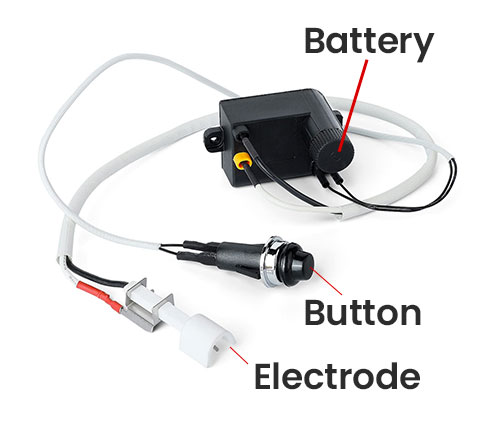Gas grill Ignitors & Start Buttons
Let’s ignite some knowledge about grill Start Buttons – they’re like the matchmakers of your grilling experience!

Electronic ignition modules require a fresh battery for optimal performance.
Reliable Ignition, really!: Contrary to common misconceptions, these ignition systems are like the dependable friend who’s always there for you. They typically consist of a gas collector box, insulated ceramic electrode, wire, and that trusty ignitor push button. You can count on these systems for years of reliable performance.
Most issues folks encounter:
For electronic ignition start buttons, replace your batteries. We get a lot of calls from customers who do not realize their ignitors utilize a AAA, AA, or 9V battery.
For Piezo/Manual ignitors (electronic, too), most issues aren’t actually ignitor problems; it’s usually grease and char buildup near the burner and ignitor that kill the chance to spark.
How They Work: Picture this – when you turn on the gas at the control knob, it flows to the burner and escapes through the burner ports. The gas gathers in the collector box, waiting for its moment of glory. Then, when you hit that ignitor push button, bam! An electric spark lights up the gas, and your grill comes to life.
 The first electronic ignition system for gas grills was introduced in the 1960s, revolutionizing the way people started their grills.
The first electronic ignition system for gas grills was introduced in the 1960s, revolutionizing the way people started their grills.
Scroll down for grill Ignitor testing and repair